WORK CUT OUT OP-ED
Cutting employment programmes now will bring disaster and despair to South Africa
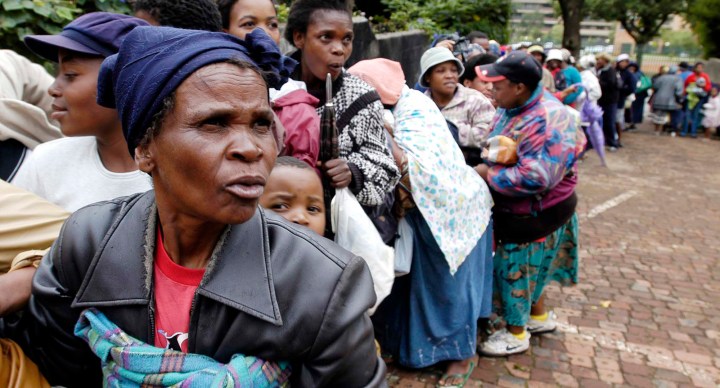
As the unemployment crisis reaches staggering levels, we should be investing more in bold solutions. The Presidential Employment Stimulus has created 1.4 million jobs and livelihood support opportunities, but faces potential dismantling due to budget constraints.
Imagine that every unemployed person in the country lined up outside the doors of the Department of Employment and Labour in Pretoria. The line would weave through the streets of the capital, bidding farewell to Gauteng, greeting Polokwane, and reaching the border town of Musina in Limpopo.
But it doesn’t stop. Soon it enters Zimbabwe, shimmies across Mozambique, and makes its way along the banks of Lake Malawi. Less than halfway through the line it crosses into Tanzania, moving past the towering silhouette of Mount Kilimanjaro and infiltrating the sweeping highlands of Kenya. Eventually, it reaches Addis Ababa, capital of Ethiopia. The line of 11.56 million people would end 700km north of Addis, somewhere near the ancient city of Aksum in the Tigray region*.
The unemployment crisis was always stark and it has become worse in the past 15 years: between 2008 and 2023 the number of unemployed people almost doubled from six million to 11.56 million.
For young people, the weight is heaviest. A staggering 63.9% under the age of 24 remain unemployed – on par with Gaza, where young people are living under contemporary apartheid. The United Nations National Human Development Report for South Africa called unemployment a “ticking time bomb”, an analogy that almost lacks gravity because it has been ticking for so long.
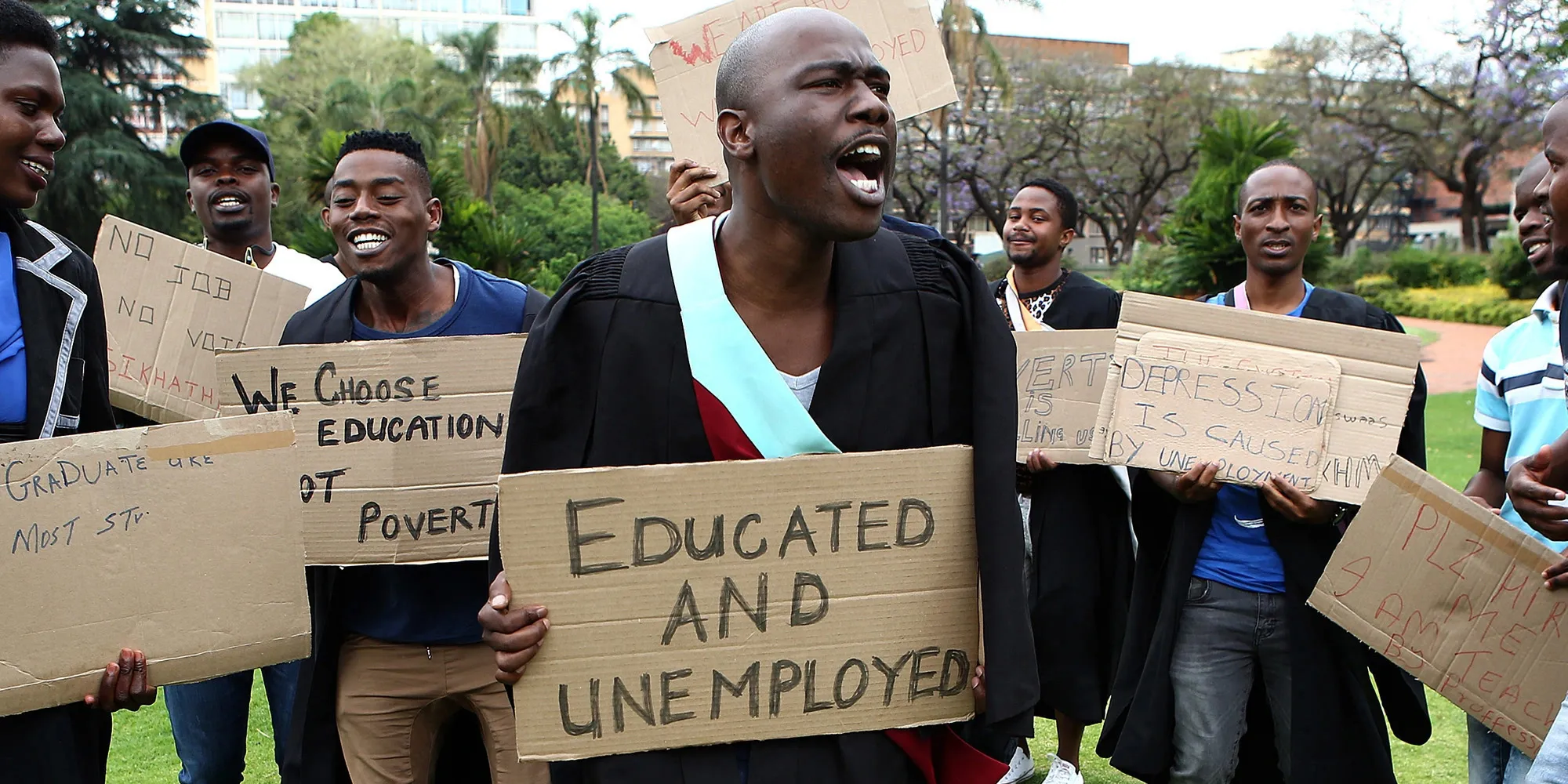
Unemployed graduates from KwaZulu-Natal and Pretoria gather at Burgers Park before marching to the Union Buildings in Pretoria to hand over a memorandum to officials demanding that the government find solutions to rising unemployment. (Photo: Gallo Images / Phill Magakoe)
Smashing young hope
But beyond metaphors, statistics and reports, the real proof of the scale of our challenge echoes in the collective psyche of young people: chipping away at an entire generation’s hope. In interviews with young people on the streets of Johannesburg they describe feelings of despair and conjure up the image of “sitting in a bottomless pit waiting for things to get worse”.
Like a snake bite, the damage of unemployment spreads if left untreated. The unemployed are more likely to slip into poverty, endure social stigma and experience psychological strain. The harm spreads outwards, affecting families, infiltrating communities and even impacting the life chances of future generations. Its venom weakens all of society, stunting economic growth, fraying the social fabric and producing social exclusion.
The “fierce urgency of now”, as analyst Duma Gqubule points out, is that South Africa must get 11.56 million unemployed people to work. In the current economic climate, the private sector has not been able to create opportunities at the scale required. Between the fourth quarter of 2008 and 2022 the formal sector created 756,000 jobs.
Over the same period the labour force grew by more than seven million human beings. The risk is that if we wait for the private sector to create jobs at this scale, the venom of unemployment will become lethal – compromising our ability to create a prosperous society.
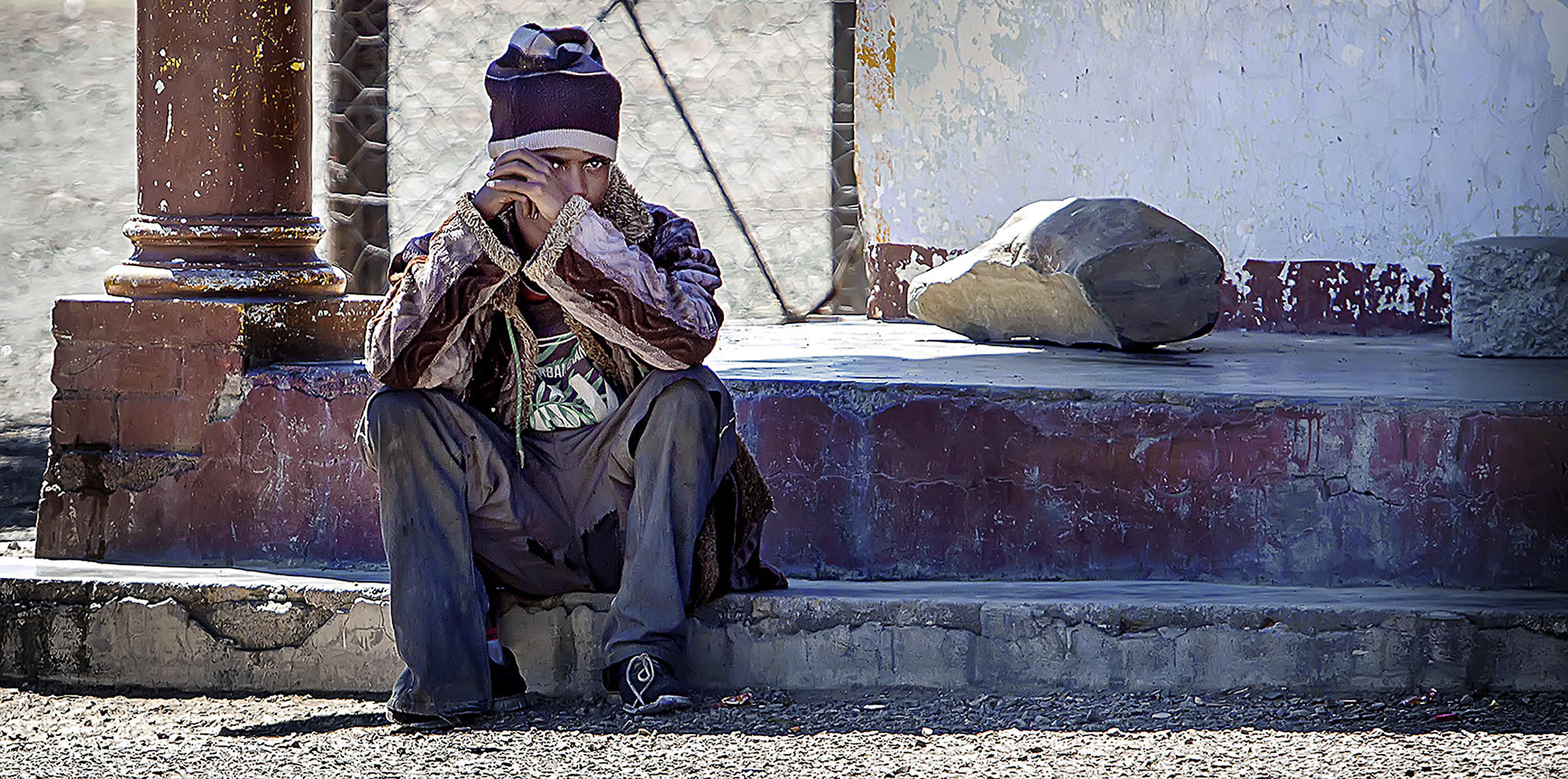
Unemployment and desperation are rife in Klipplaat, Eastern Cape. (Photo: Donna van der Watt)
State stimulus the answer
In such a context, the rationale for public employment programmes is clear. Where the private sector cannot create employment opportunities at the scale required, there should be alternative provision of meaningful, paid work.
South Africa has a rich history of public employment: the Expanded Public Works Programme and Community Work Programme have been lifelines for many. But it’s the recent Presidential Employment Stimulus that has shown what’s truly possible when we dare to think big.
In a mere two years this initiative has created more than a million job opportunities. Its flagship programme – the Basic Education Employment Initiative – has placed more than 850,000 young people in more than 23,000 schools in every region of the country since its inception in 2020.
Since 2008, the line of unemployed people has been getting longer. Should policymakers use what is “fiscally prudent” as the extent of their ambition, they risk aggravating the crisis.
Among many tasks, these young school assistants support teachers in the classroom, lighten administrative loads, capture data and maintain school gardens. This is serious work: there is considerable responsibility and real long-term benefits to society.
Despite the apparent success of this initiative, the looming shadow of fiscal conservatism threatens to bring the axe down on it. National Treasury finds itself between the proverbial rock and a hard place. With sluggish economic growth and reduced revenue collections, the fiscal axe will be wielded ruthlessly in the forthcoming medium-term budget policy statement.
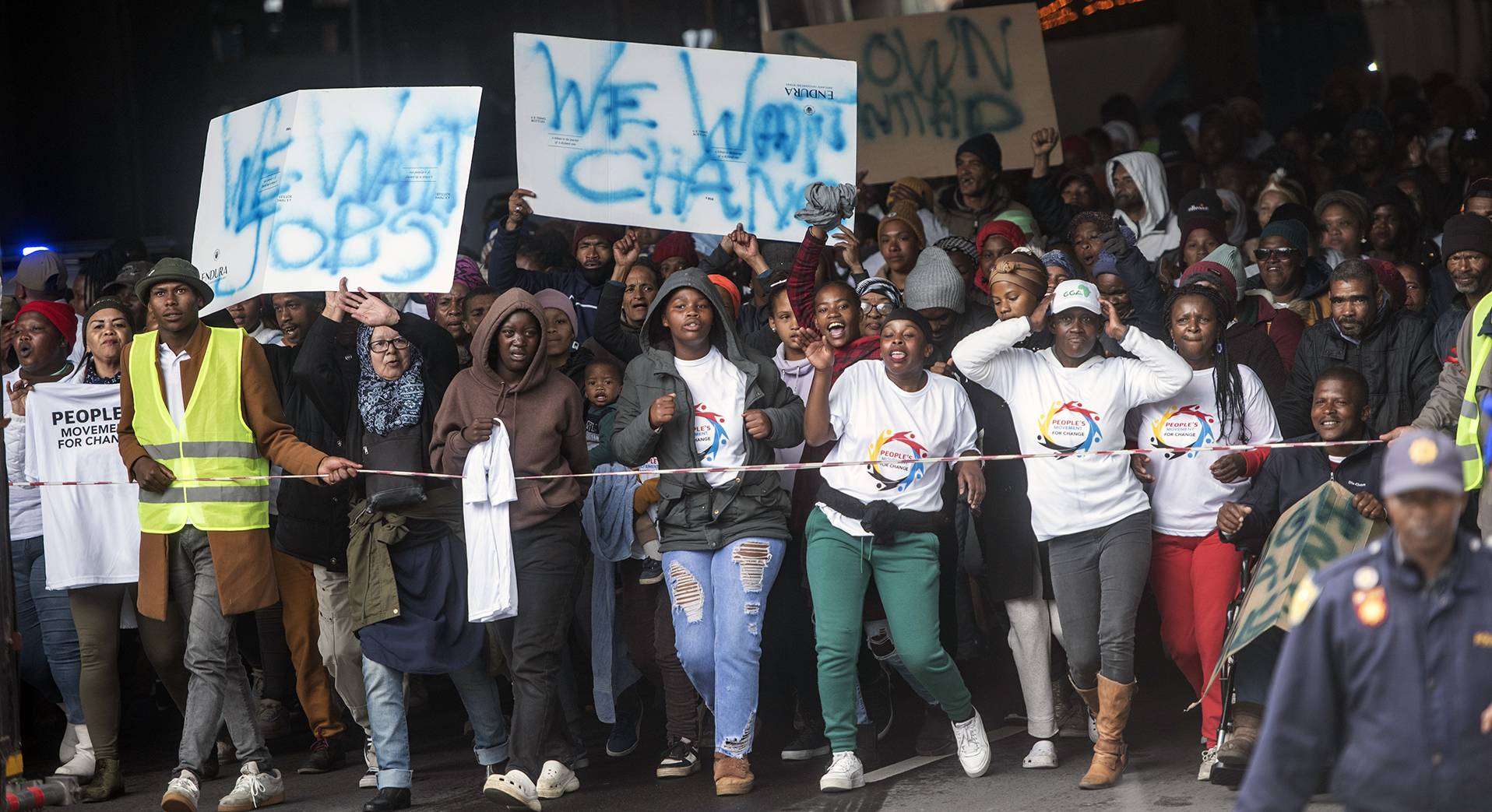
The People’s Movement for Change march to the Cape Town Civic Centre on 14 September 2023, protesting against a lack of service delivery, unlawful evictions, high electricity tariffs, unemployment, unfair treatment of informal traders and housing issues. (Photo: Gallo Images / Brenton Geach)
A bargain
But now is precisely the wrong moment to consider scaling back the public employment programmes launched under the Presidential Employment Stimulus. Its first phase cost R12.6-billion and generated more than 500,000 jobs and livelihood support opportunities. For context, consider that Eskom is slated to receive R254-billion in debt relief over the next three years.
When placed in a broader fiscal context, investment in public employment is not only justifiable but practically a bargain.
Read more in Daily Maverick: SA jobless rate dips slightly in Q2, but is still sky-high at 32.6%
What further amplifies the importance of these public employment programmes is their reach. This matters because the burden of unemployment is not distributed evenly. Take the stark contrast between the Pondoland region of rural Eastern Cape, where 65% of working-age adults face unemployment, and urban areas like the City of Cape Town, where the unemployment rate stands at just 25%.
It is in these marginalised places ‒ where the destructive impacts of unemployment manifest most acutely ‒ that public employment has unmatched potential for both economic and social upliftment.
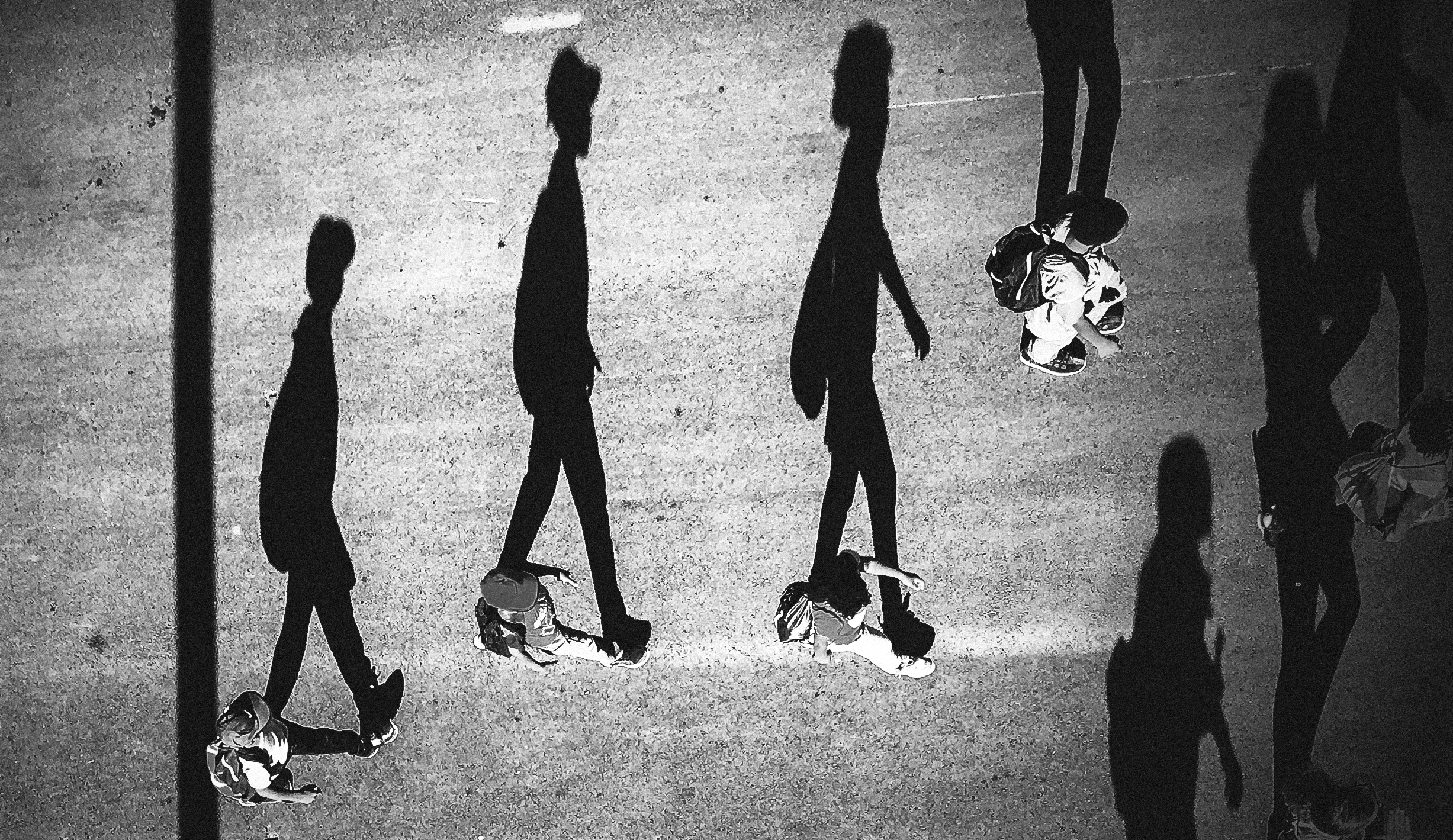
As the unemployment crisis reaches staggering levels, we should be investing more in bold solutions. (Photo: Tom Barrett / Unsplash)
Highest impact
The Basic Education Employment Initiative reaches the most remote and marginalised communities, places where private-sector jobs are particularly scarce. This initiative thrives in areas with high unemployment because every community ‒ regardless of its remoteness ‒ has a school.
Similarly, the Social Employment Fund ‒ another initiative under the Presidential Employment Stimulus ‒ has more than 65,000 participants at 7,635 geo-tagged work sites across the country. These aren’t just job locations, they are hubs of social change where participants are employed in initiatives ranging from recycling and public art to reading clubs and support for survivors of gender-based violence.
Since 2008, the line of unemployed people has been getting longer. Should policymakers use what is “fiscally prudent” as the extent of their ambition, they risk aggravating the crisis, allowing the venom of unemployment to weaken our already damaged social fabric.
A crisis of the magnitude of our unemployment requires bold policies that match its scale – policies like the Presidential Employment Stimulus. Anything less is a policy failure that squanders South Africa’s most vital asset: its people. DM
* If each person occupies a space of about 0.5m standing single file: 11,560,000 people × 0.5m/person = 5,780km.
Zak Essa is a programme analyst supporting the Presidential Employment Stimulus.





















 Become an Insider
Become an Insider
The youth are unemployable, and they’re would be more than enough social funding but for the 1GDP the ANC made disappear.